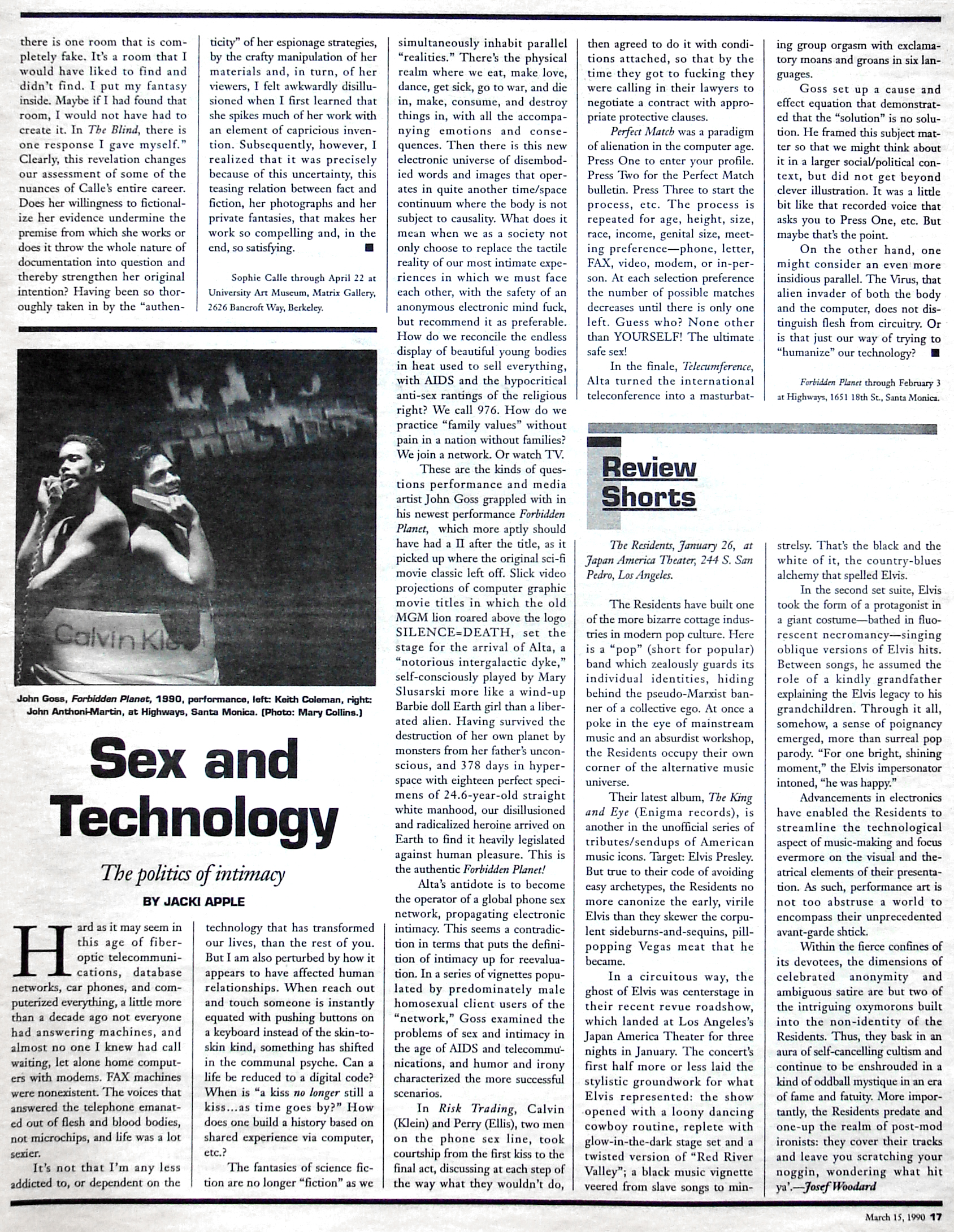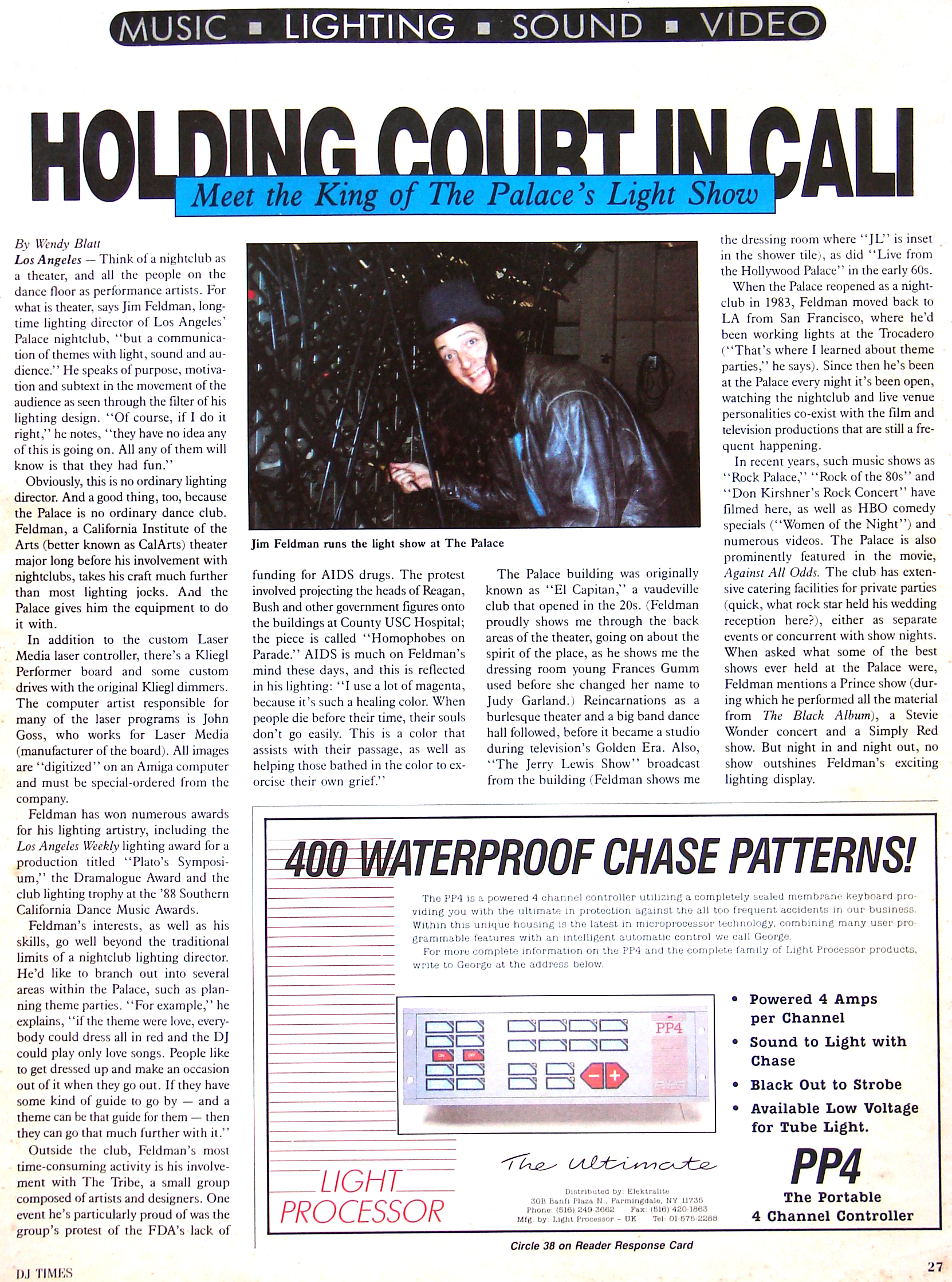Swank Style by Matthew Link in the Sep 2014 issue of Desert Outlook magazine
by Jacki Apple, Artweek, March 15, 1990:

Holding Court in Cali: Meet the King of The Palace's Light Show
by by Wendy Blatt, DJ TIMES, May, 1989:

Rapture Stations in the Virtual Funhouse: a hyper-media theater machine
by Zan Dubin, Los Angeles Times, ART NEWS, July 09, 1989
"Confrontation with and transcendence of death" are prominent themes of the collaborative, computerized, walk-through installation, said John Goss, who conceived and created the piece with fellow Los Angeles artists Alan Pulner and Richard Zvonar.
Incorporating video, an audio score, lighting effects and eight performers who assume various persona, the artwork looks like an abandoned carnival where characters and themes emerge and recede from the darkened space as visitors wander about, he said.
The piece centers around a fictitious man named "Bob" who is dying of AIDS. Quitting his business and "seeking alternative routes for living and dealing with death," Bob encounters historical figures such as Shakespeare's Hamlet, Marilyn Monroe and jazz singer Billie Holiday.
"These various figures interact with each other in their own personal struggles and quests for freedom," said Goss, who has worked with video, lasers and computers. "In one scene, Billie Holiday is Bob's nurse, and she is giving her own story of oppression and how she used her music to transcend that."
The focus on death "just seemed to float to the surface" as the installation took form, Goss explained.
"As the three (collaborators) began to work, it turned out a lot of our interests were centering on death, because of AIDS or other cultural things. Certainly as a gay man, I'd find AIDS to be most important, though this is probably true for almost anyone."
Like the long-running play "Tamara," the dramatic progression of "Funhouse" is not linear and its structure may change with each performance. (Performances are scheduled for tonight and July 14, 15, 16 and 21, 22 and 23. Audiences may attend any time between 8 and 11 p.m.)
Scenes will change as actors receive such computer-generated cues as sound or lighting changes. The computer thus acts like a mastermind to determine and trigger each plot twist or turn--along with a carnival barker who will also direct the action, Goss said.
Audiences may contribute to the work as well.
Anyone may call (213) 399-XXXX to offer a spoken or musical message that will be recorded and added to the work's audio score or as performers' dialogue. Or, a fax machine at (213) 399-XXXX will take written dialogue or drawings to be used as visual adornment in the installation.
"We're trying to get people out of the role of passive viewer," Goss said.